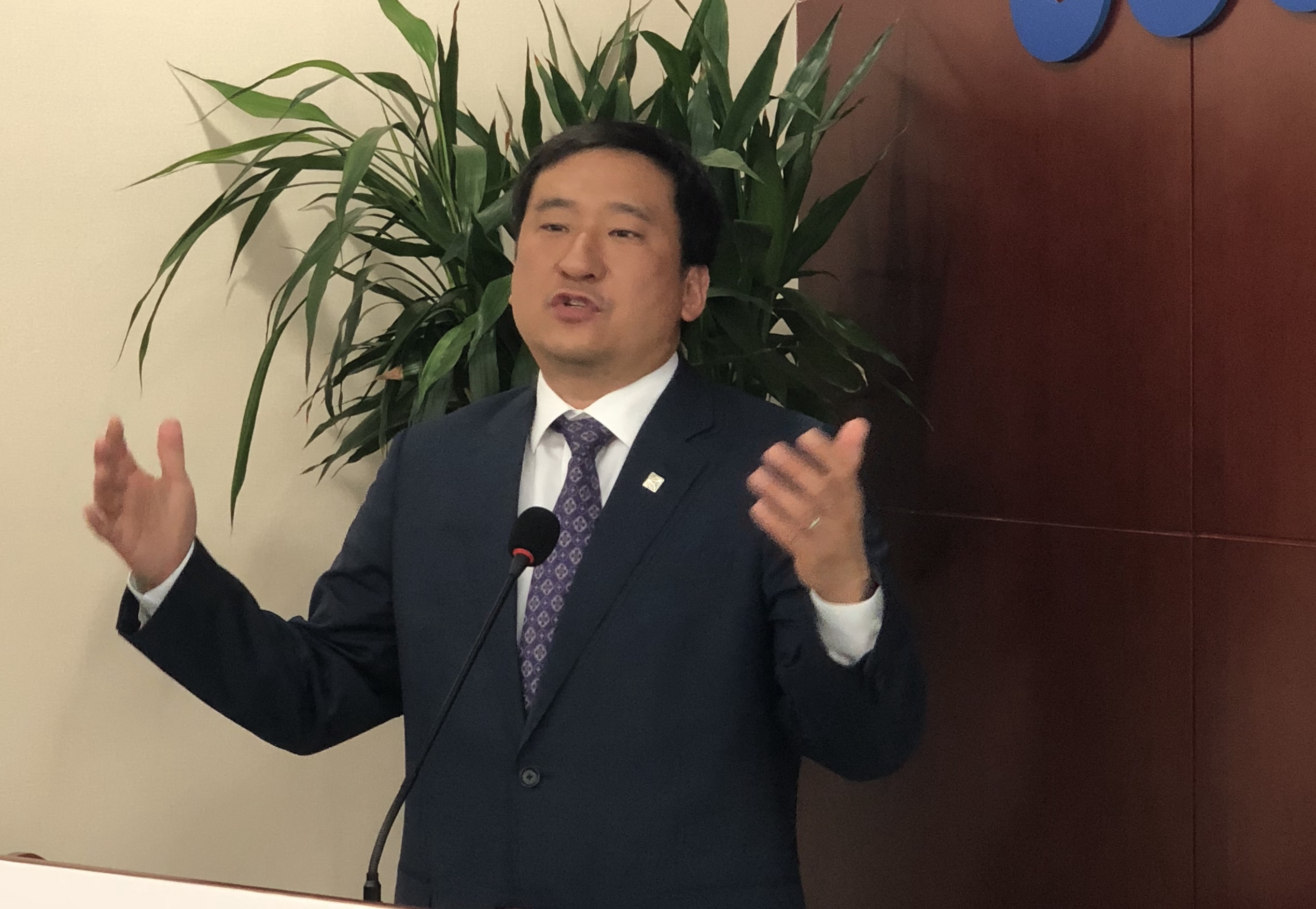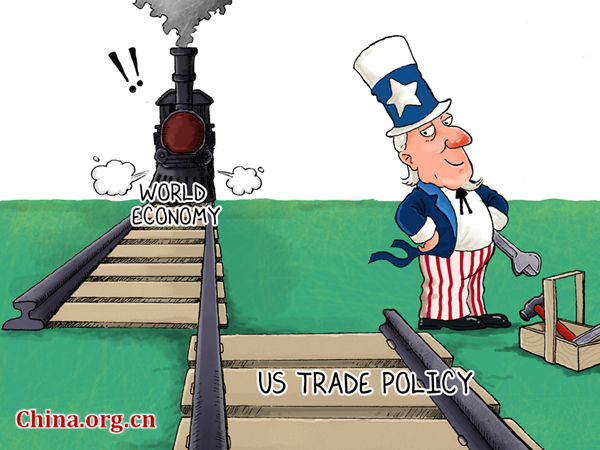Timeline: China-US trade dispute
 0 Comment(s)
0 Comment(s) Print
Print E-mail China.org.cn, August 23, 2018
E-mail China.org.cn, August 23, 2018
Editor's note: Since the start of the year, the United States has been wielding tariffs against China to alter what President Donald Trump calls "unfair trade practices." The moves have triggered tit-for-tat retaliations from China, and are expected to drag down global growth by 0.5 percent, according to the International Monetary Fund.
| US: | China: |
March 22 U.S. President Donald Trump signed a memorandum that could impose tariffs on up to US$60 billion of imports from China, the latest unilateral move that poses a threat to global trade.  | April 1 China decided to impose a tariff of 15 percent on 120 items of products imported from the United States, and a tariff of 25 percent on eight items from the country.  |
April 3 The Office of U.S. Trade Representative published a proposed list of Chinese goods subject to additional 25 percent tariffs. The list covers approximately 1,300 products imported from China.  | April 4 China unveiled a list of products worth US$50 billion imported from the United States that will be subject to higher tariffs, including soy bean, automobiles and chemical products.  |
April 5 U.S. President Donald Trump said he has asked the U.S. Trade Representative (USTR) to consider slapping US$100 billion of additional tariffs on China. | April 6 China will fight "at any cost" and take "comprehensive countermeasures" if the United States continues its unilateral, protectionist practices, the Ministry of Commerce said. |
April 16 U.S. Department of Commerce suspended an export control settlement deal with Chinese telecom equipment maker ZTE Corporation. | April 17 China announced that it will impose provisional anti-dumping measures on grain sorghum imported from the United States. |
May 19 China and the United States issued a joint statement on economic and trade consultations, vowing not to launch a trade war against each other.  A trade war will cut US living | May 4 China and the United States reached agreements on some issues in their economic and trade consultations in Beijing, and agreed to set up a work mechanism to keep close communication.  |
June 2-4 A U.S. delegation visited China from June 2-4 to continue consultations with the Chinese side on economic and trade issues.  | May 17 Chinese Vice Premier Liu He arrived in Washington on May 17 for economic and trade consultations with the U.S. side.  US tariffs add burden to its US tariffs add burden to its |
June 15 The United States announced additional tariffs of 25 percent on Chinese imports worth approximately US$50 billion.
| June 16 China decided to impose additional duties of 25 percent on 659 items of U.S. products worth about US$50 billion.  |
July 6 The United States confirmed that a 25-percent additional tariff on Chinese products worth US$34 billion would become effective on July 6, targeting Chinese products from sectors like aerospace, IT and auto parts.  | July 5 China's additional tariffs on some import products from the United States will be implemented immediately after the new U.S. tariffs take effect, the country's customs authority said.  US expert criticizes trade war with China |
July 10 The United States said on it will impose 10 percent tariffs on an additional US$200 billion in Chinese imports.   Former US ambassador to China: Former US ambassador to China: | July 11 China expressed solemn protest against the United States' announcement of a list of tariffs on US$200 billion of Chinese goods.   |
Aug. 1 Trump called for raising the proposed tariff on US$200 billion of Chinese goods from 10 percent to 25 percent.
| Aug. 3 China announced its decision to impose additional tariffs of four different rates on 5,207 items of imported U.S. products worth US$60 billion.  |
Aug. 7 The Office of the U.S. Trade Representative announced that the country will begin collecting extra tariffs on another US$16 billion in Chinese goods on Aug. 23.   | Aug. 8 China decided to impose additional duties of 25 percent on the 16-billion-dollar of U.S. products after making proper adjustments to the second part of a list of the products subject to the tariffs.  Aug. 16 A delegation led by China's vice-commerce minister will visit the United States in late August to talk with the U.S. counterpart on bilateral economic and trade issues, the Ministry of Commerce said. |





